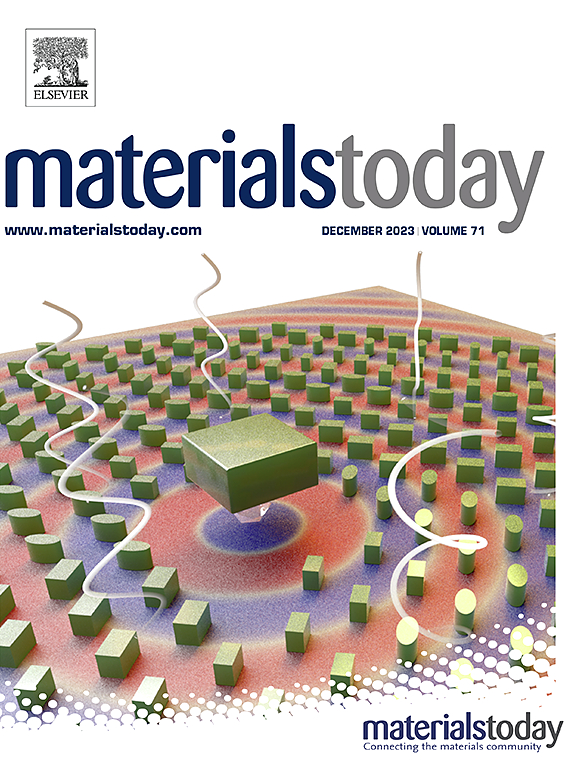Sequential hardening mechanisms in additive-manufactured NiTi shape memory alloys that can significantly delay compressive failure
IF 21.1
1区 材料科学
Q1 MATERIALS SCIENCE, MULTIDISCIPLINARY
引用次数: 0
Abstract
Most material design strategies devoted to the strength-ductility synergy in tension are based on the delay of the necking instability. However, the counterpart investigations under compression remain elusive. Recent developments in simulating the failure process reveal that microscopic voids or cavities under compression/shear-dominated loadings will evolve sequentially as flattened to a micro-crack, rotating and elongating into kinks, and then interacting and coalescing with neighboring micro-cracks. This entire process can be significantly slowed down if the matrix material sustains a high work hardening exponent. Motivated by this novel micromechanical understanding, this work successfully realized hierarchically heterostructured microstructures in NiTi shape memory alloys (SMA) by using the selective laser melting (SLM) additive manufacturing technique. It is the sequential or progressive transition from the martensitic phase transformation, to heterogeneous deformation induced hardening, and then to amorphous lamellae hardening at later stage that sustains a high work hardening rate which results into an exceptionally high failure strain of the as-fabricated (without post-treatment) SMA under compression. The occurrence of amorphization at high strains is attributed to the high dislocation density and to the oxygen-assisted energy barrier reduction. This work thus offers an unprecedent design approach for the development of high performance SMAs.
增材制造的NiTi形状记忆合金的顺序硬化机制可以显著延缓压缩失效
大多数材料设计策略致力于强度-延性协同的拉伸是基于颈部失稳的延迟。然而,压缩下的对应研究仍然难以捉摸。模拟破坏过程的最新进展表明,在压缩/剪切主导载荷下,微观孔隙或空腔将依次演变为扁平微裂纹,旋转并伸长成扭结,然后与邻近的微裂纹相互作用并合并。如果基体材料保持较高的加工硬化指数,整个过程可以显著减缓。基于这一新的微观力学理解,本研究利用选择性激光熔化(SLM)增材制造技术成功地在NiTi形状记忆合金(SMA)中实现了分层异质结构的微观结构。从马氏体相变到非均质变形诱导硬化,再到后期的非晶片层硬化,这是一个连续或渐进的转变,维持了高的加工硬化率,导致制造时(未经后处理)SMA在压缩下的异常高的失效应变。高应变下非晶化的发生是由于位错密度高和氧辅助能垒还原所致。因此,这项工作为高性能sma的开发提供了前所未有的设计方法。
本文章由计算机程序翻译,如有差异,请以英文原文为准。
求助全文
约1分钟内获得全文
求助全文
来源期刊

Materials Today
工程技术-材料科学:综合
CiteScore
36.30
自引率
1.20%
发文量
237
审稿时长
23 days
期刊介绍:
Materials Today is the leading journal in the Materials Today family, focusing on the latest and most impactful work in the materials science community. With a reputation for excellence in news and reviews, the journal has now expanded its coverage to include original research and aims to be at the forefront of the field.
We welcome comprehensive articles, short communications, and review articles from established leaders in the rapidly evolving fields of materials science and related disciplines. We strive to provide authors with rigorous peer review, fast publication, and maximum exposure for their work. While we only accept the most significant manuscripts, our speedy evaluation process ensures that there are no unnecessary publication delays.
 求助内容:
求助内容: 应助结果提醒方式:
应助结果提醒方式:


